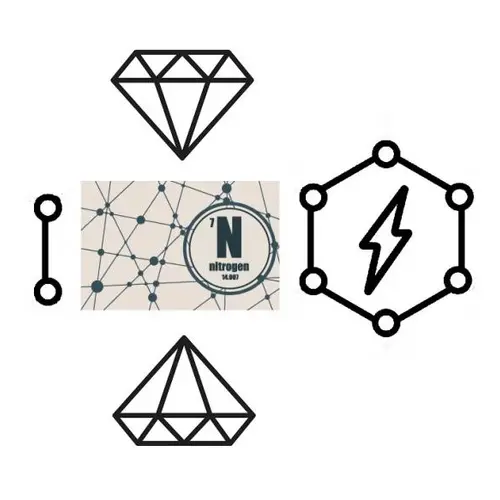Washington, DC— New work from an international team led by Carnegie’s Alexander Goncharov synthesized a new material composed of six nitrogen atoms in a ring, bringing scientists one step closer to creating a long-theorized, pure-nitrogen solid that could revolutionize energy storage and propulsion. Their findings published last week in Nature Chemistry.
Nitrogen is one of the most common elements in the universe and is abundant in biochemical compounds. It is notable for the extremely strong triple bond of its elemental form—when two nitrogen atoms join to form N2 gas. This attraction is so strong that despite the abundance of nitrogen in Earth’s atmosphere, it hardly ever does anything but float around ignoring everything but itself.
Nitrogen’s preference to bond with itself over every other option underlies its use in chemical explosives, including gunpowder and dynamite. Compounds in which nitrogen is weakly bonded to other elements are often on the verge of reconfiguring themselves to release N2 gas and give off tremendous amounts of energy.
For years, the scientists have theorized about the potential of developing a nitrogen compound with a single electron pair shared between the atoms instead of the usual three. Such materials have actually been created, but they aren’t stable under ambient conditions and their synthesis requires such extreme methods as to make mass production impractical.
“The application of extreme pressures is a tried-and-true method for inducing changes in molecular architecture and synthesizing new compounds,” Goncharov explained.
Working with lead author Yu Wang of the Chinese Academy of Sciences; colleague Maxim Bykov formerly of Carnegie and Howard University, now at the University of Cologne; frequent collaborators Artem Oganov of the Skolkovo Institute of Science and Technology; and Vitali Prakapenka from the University of Chicago, Goncharov’s team started with a potassium-containing nitrogen precursor and brought it up to about 450,000 times atmospheric pressure, then further heated it with powerful infrared lasers to induce synthesis of a new compound.
“To probe material properties and structure in the lab at such extreme pressures and temperatures we used a high brilliance synchrotron x-ray beam at Argonne National Laboratory’s Advanced Photon Source,” Prakapenka said.
The result was a crystalline material with a metallic luster that is composed of series of hexagonal rings of pure nitrogen, stabilized by interspersed potassium atoms. The nitrogen atoms that comprise the ring shape are held together by an attraction that hovers between a single and double bond.
“Our newly formed compound is stable under pressures of about half that under which it was formed,” Goncharov said. “This means that we haven’t yet achieved a form of pure poly-nitrogen that could be used for practical applications. However, demonstrating the existence of such exotic material is important for future scalable synthesis of polynitrides. This is an important step toward an eventual revolution in energy storage and propellant materials.”

Advancing Energy Solutions
The research team started with a potassium-containing nitrogen precursor and brought it up to about 450,000 times atmospheric pressure, then further heated it with powerful infrared lasers to induce synthesis of a new compound.
This new material composed of six nitrogen atoms in a ring brings scientists one step closer to creating a long-theorized, pure-nitrogen solid that could revolutionize energy storage and propulsion.
Process illustration prepared by Alexander Goncharov and Natasha Metzler.
Acknowledgments
This work was supported y the National Natural Science Foundation of China, the Chinese Academy of Sciences, the Army Research Office, the Russian Science Foundation, and the U.S. National Science Foundation.
The Advanced Photon Source is a U.S. Department of Energy (DOE) Office of Science User Facility operated for the DOE Office of Science by Argonne National Laboratory.
